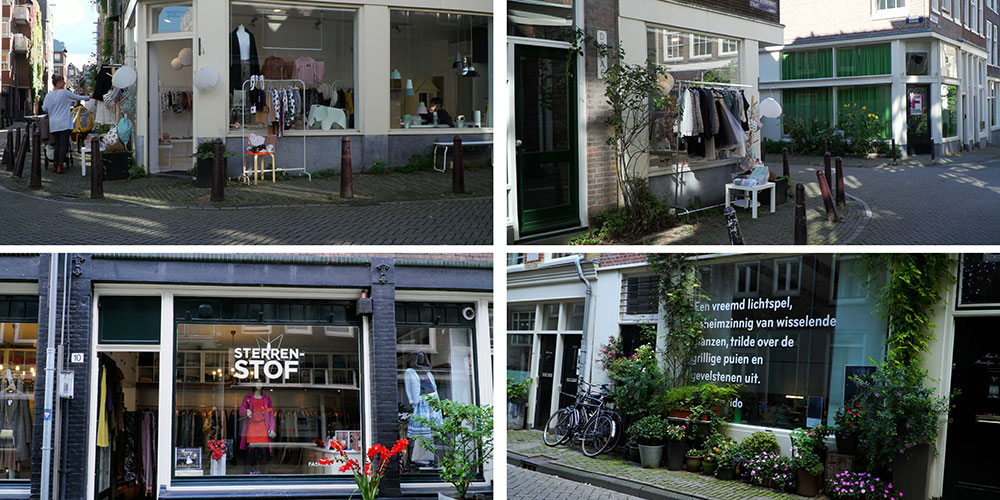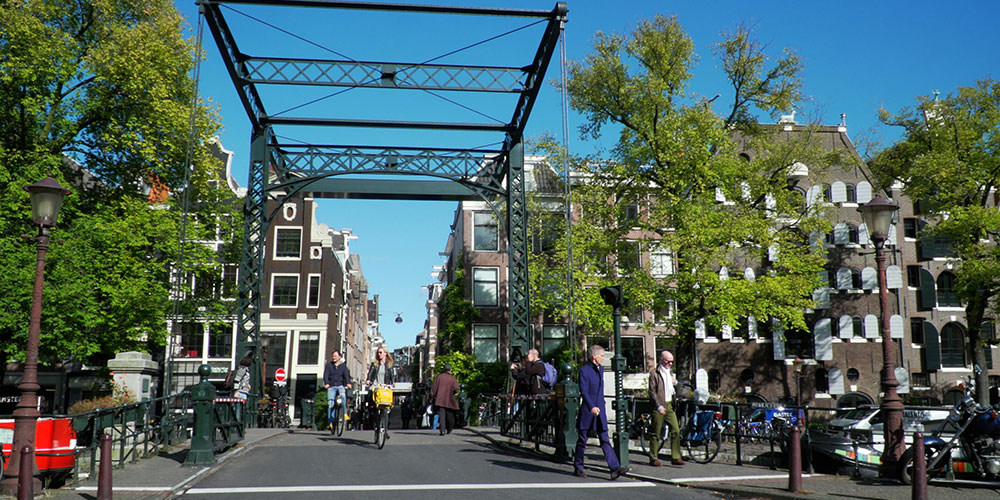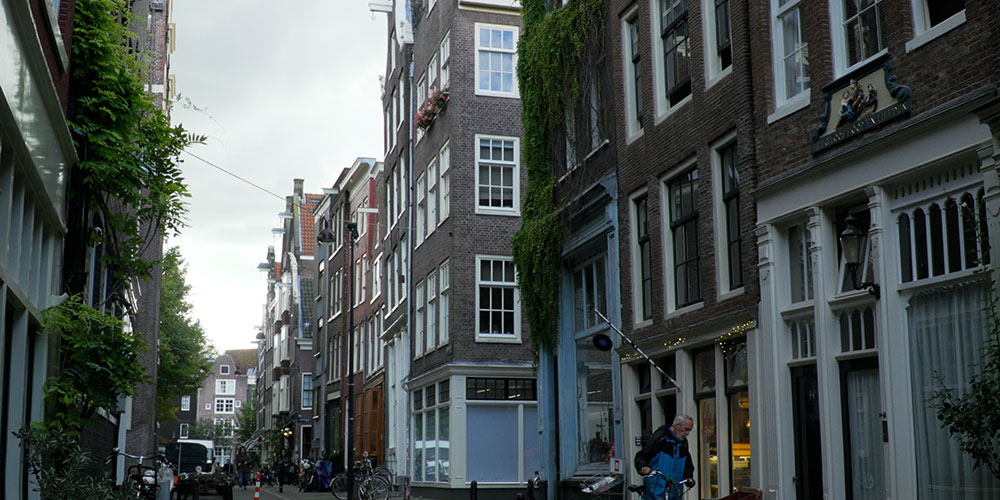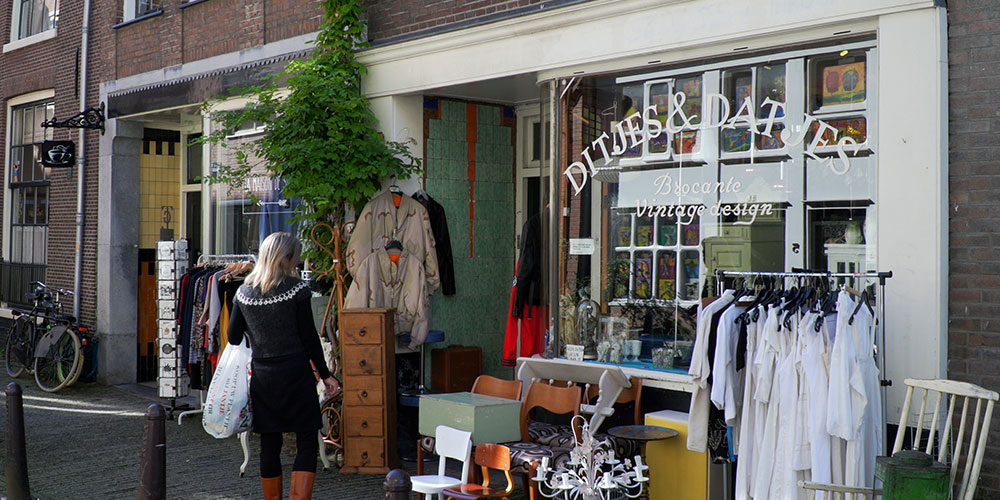The Jordaan neighborhood on the west side of central Amsterdam is slightly off the beaten track with a peaceful quality that is fun to explore. It is not in the touristic commercial section of town, yet it's just 700 meters away from the Dam square, easy to reach in a10-minute walk.
For more information about Amsterdam, see the Official Tourist Information website.

Jordaan is one of the most enjoyable neighborhoods to visit because of its quiet atmosphere and artistic bohemian vibe, something like New York's Greenwich Village or Soho. There's a casual outdoor bar scene and independent small stores offering vintage and handmade items. A few cars might come through, but mostly it's a relaxing place for people to just wander around.
.jpg)
It is primarily residential, with quiet narrow streets, canals, shops, cafés, and restaurants. You don’t find major museums, concert halls or important historic landmarks here, but instead there is an authentic character of Amsterdam without the crowds.

Crossing over an old-fashioned drawbridge, we’re entering Jordaan from the north end which begins at the Brouwersgracht canal, often considered one of the most beautiful canals of Amsterdam, and to the east, we have another border canal the Prinsengracht.
.jpg)
Right alongside the Prinsengracht you'll find one of Amsterdam's many lively street markets, Noordermarkt, and sometimes you'll get jazzy street entertainment. Every Monday morning it's a fleamarket selling fabric, some food, secondhand clothing, old shoes, records, etc. and on every Saturday, it's a biological food market selling a wide range of ecological products like organic fruits and vegetables, herbs, mushrooms and cheese.
The streets here are straight and perpendicular, yet it's pretty easy to get lost because there are no obvious landmarks when you're walking around. Even if you have a map, you might inadvertently take a right turn when you thought you were taking a left turn, and you end up on the opposite side of the district – it's possible.
.jpg)
The Jordaan used to have 11 canals, but during the late 19th century, half of them were filled in to make room for streets and parks, and create solid land for buildings, cars and people, such as at Westerstraat, the widest and busiest street in the area.

That created some major streets with traffic and shops, but the side roads here are quite narrow and peaceful and semi-pedestrian. You can walk in the street, but a few cars will be going by, so keep your eyes and ears open.
Mostof the buildings are quite old, dating back originally to the 17th and 18th century, typically five stories high in a medium density. By the 1890s, 85,000 people were crammed into 11,000 apartments, making it one of the world's most densely populated zones.

These old buildings originally provided low-cost housing for the working-class laborers who built the city, for hundreds of years. It was a poor neighborhood known for its radical politics and love of music and beer.
However, in the early 20th century, the neighborhood continued to deteriorate, buildings fell down, sewage backed up, so the by the 1930s the city had a plan to demolish the entire neighborhood and build modern housing. Fortunately, community opposition held up and fought against this plan for many years and successfully won the battle to preserve it.
.jpg)
But then the rent started going up, and in the 1960s, many of the original residents moved out to more affordable locations. In recent decades the gentrification accelerated, and like in many cities, property values have skyrocketed because it's one of the most desirable neighborhoods of Amsterdam, and a great place to visit.
Today the quality of life is very high with a reduced population of just 20,000, many of whom are well-paid professionals, because this is become a very expensive neighborhood – it's gentrified.
.jpg)
This urban concentration offers lots of amenities, like restaurants on the corner, little markets for daily purchases, with apartments on the upper floors. An exotic variety of ethnic restaurants, avant-garde art galleries, practical shops, like hair salons and eyeglass stores, create a modern and holistic community.
.jpg)
And of course, being Dutch, they've always got their canals for boating recreation. You'll see all kinds of boats out, big and small, including some that you have to peddle for propulsion, and others where you can sit back and enjoy one of the famous tour boat rides of the Amsterdam canals – something you must do when visiting this city.
.jpg)
Some canals, like the Egelantiersgracht, are smaller in scale than those famous waterways. They're narrower, shorter, but this gives them much more charm. The Egelantiersgracht canal is just 500 meters long and is so attractive it would be worth walking the whole distance. Then you can go around the block on two other canals while also exploring some of those side lanes. Typical of Jordaan it's a residential neighborhood, but there are always some shops that will catch your interest.

It is fun and easy to simply wander through the little back lanes of this fascinating neighborhood, spiced up with independent art galleries. You cannot get too lost, since it is bounded by canals all around it, and it has straight streets that are simple to navigate. And you'll find there are signs on nearly every corner, in that typical Dutch efficiency, to help you figure out where you are.
.jpg)